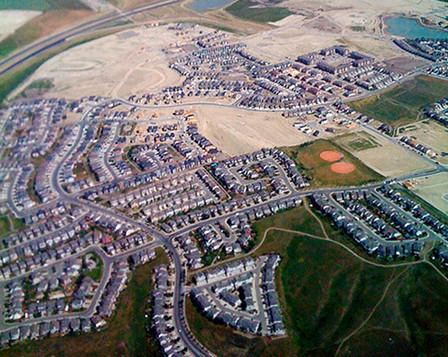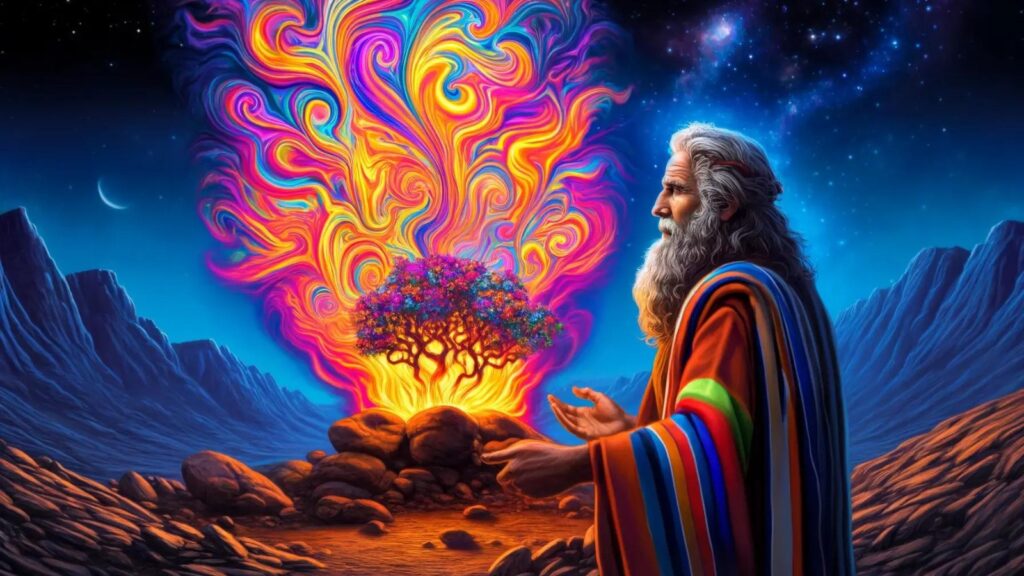This interview is excerpted from Duncan Crary’s The Kunstler Cast: Conversations with James Howard Kunstler, from New Society Publishers, available here.
James Howard Kunstler is the author of The Geography of Nowhere, Home From Nowhere,The City in Mind: Notes on the Urban Condition, and The Long Emergency. His work addresses the suburban and urban environments, and the challenges posed by the coming permanent global oil
crisis, climate change, and other “converging catastrophes of the 21st
Century.”
Duncan
Crary: You have
what you call a “Long Emergency” view of where civilization is heading. What is
“The Long Emergency?”
James
Howard Kunstler: I’ve
labeled this situation we’re heading into “The Long Emergency” because I think it’s
going to be a protracted experience for mankind and for us in the United States
in particular. It’s really about how we are heading into a period of resource scarcity
and the disruption and depletion of our
oil supplies. It’s about the allocation of this crucial resource all around the
world, and the geopolitical implications of those inequities. And how these
problems are going to combine with climate change to cause problems with everything
we do, from how we produce and distribute
our food to how we’re going to have trade and manufacturing when Walmart dies.
And not least, the destiny of the suburban, car-dependent, happy motoring
living arrangement. Which is probably, for me, the biggest part of the
equation.
And you don’t see good things
in store for the suburbs in the Long Emergency?
Suburbia is going to fail a lot
worse than it’s already failing, because we’re not going to have the energy to
run it the way it’s been designed to run. For that reason I refer to suburbia
as the greatest misallocation of resources in the history of the world. We took
all of our post-world war wealth — and actually quite a bit of the wealth that
we had accumulated for decades before that — and we invested it in this living
arrangement that had no future. And now we’re stuck with it. And to make
matters worse, we didn’t build it very well in the first place. So as it begins
to decay it decays very rapidly and becomes a very unrewarding place to live
in.
Jim, it seems almost impossible
to persuade suburbanites that there’s anything wrong with suburbia or that it
could ever “fail.” I’ve tried, and it almost feels like arguing with someone
about deeply held religious beliefs.
Again, one of the unfortunate
repercussions of building suburbia is: now that we’ve built it, it provides a
very powerful psychology of previous investment. Which means that you put so
much of your wealth into this system already — into this structure for daily
life with no future — and you’ve invested so much of
your national identity in it, that you can’t even imagine letting go of it or
substantially changing it or reforming it. And that, I believe, is what’s
behind our inability to have a
coherent discussion about what we’re going to do about our problems in America.
Because the psychology of previous investment has got us trapped in a box — we
will not allow ourselves to think about how we’re going to do without this
crap.
You give lots of reasons in The Long Emergency and in
your other
writings
for why suburbia is going to fail. But the biggest one is that suburbia
only works when you
have
a cheap fossil fuel supply, and you say that supply of cheap
fuel is
running
out. How do you counter the “Drill, Baby, Drill” camp? The folks who
believe there are “Saudi Arabias” of oil right here in the US
just waiting
to
come out of the ground?
There’s this general
misunderstanding that there are huge amounts of oil reserves in and around
North America that are waiting to be exploited. North America is one of the
most thoroughly explored regions on the Earth for oil and we pretty much know
what’s down there. And when you hear people saying we gotta “drill, drill,
drill” for ANWR — well, I was never even against drilling in ANWR, the Arctic
National Wildlife Refuge. My idea was that Obama should get behind it just to disarm
the stupid Republicans so they wouldn’t keep yakkin’ about it, because there’s
such an insignificant amount of oil up there.
What about the tar sands, shale
gas and shale oil?
A lot of people think we’re going
to compensate our losses elsewhere. But the tar sands will probably never
produce more than three million barrels a day. And I think we will discover a
lot of gas trapped in that tight rock. But that’s very expensive and difficult
to get out. There is also a lot of wishful
thinking about switching our truck fleet over to natural gas, because we have “a
hundred years” or “three hundred years” of natural gas. That’s just not true. All of these ideas and
programs aren’t going to work out the way we wish they would, because so much of
this is about wishful thinking and fantasy. Look, we use twenty million barrels of oil a day in the
USA. And what we’re talking about here are very expensive mining operations, which
also happen to be fantastically environmentally destructive.
In the past few years, you’ve
become increasingly focused on how our financial problems may be a more
immediate catalyst for the Long Emergency than energy.
It was kind of a surprising thing.
Many of us who were following the oil problem and the energy predicament over
the last ten years, we thought the situation would come to a head over energy
supplies and prices. And in a way they did. But really the salient effect of
all that was that we destroyed the banking
system. The net effect of that right now is that the USA is broke at all levels
— including the household level at the bottom, the corporate enterprise level in
the middle and the government level at the top — and that includes all levels
of the government: federal, state, county and
municipal. We’re all broke at every level. We don’t have money at our disposal
any more so we’re going to have to figure out some other strategies for
creating a post-fossil fuel economy, for
carrying our civilization forward, for enabling us to remain civilized.
Tell me
how you got from The
Geography of Nowhere to The Long Emergency. When did
you first start thinking about the connection between oil depletion and the
fate of suburban sprawl?
I guess we’d
have to really go back to the 1970s. I had come from the hippie newspapers in
Boston and I had just gotten a fulltime job on the evening paper in Albany, New
York. The newspaper had just established itself in a brand new building on
this heroic boulevard of strip shopping, about ten
miles outside of Albany. It had moved from a building downtown out to the suburbs. I got there in
August of 1973, and about three months later, we got into the OPEC oil embargo.
It was a huge local story everywhere, but it was pretty severe in our region. A
lot of the gas stations were not
getting gas, and there were lines at the gasoline stations everywhere — tempers
were flaring, people were beating each other up, guns were brandished. The
whole thing only lasted a couple of months. I think the worst of it only ran
about three or four weeks. But for that time, there were very few people
driving, if they could possibly avoid it. The highways were empty. The streets
were empty.
It was like The Day the Earth Stood
Still. It made a huge impression on me, because here I was a young reporter
— about twenty-five years old or so — and I saw the world-as-we-had-known-it
stop. It was especially peculiar seeing this happen in the new burgeoning
suburbia, as it was being built out and elaborated. So it made a huge
impression on me: “This is important — how we live in America and what it’s
going to mean for how we get to where we’re going in the future in America. I’ve
seen a little glimpse of the future now and I wonder what’s going to be
happening.” And then it was over. It came to an end. It did provoke a lot of
changes and troubles for the rest of the decade.
We had an economy that was badly
upset by oil prices that rose very quickly, very steeply. We had stagflation,
which was a new phenomenon that nobody had ever seen before, where you have inflation
plus a stagnating economy. You began to see the American manufacturing sector
fall apart. The first manifestation was when the Japanese carmakers started to
get the upper hand over Ford and General Motors. The American carmakers were
all tooled up to build these giant cars the size of ferry boats, and in comes
Nissan, and Honda, and Datsun, as it was called at the time – they’re selling cars
that are three feet shorter, and use one-third of the amount of gas, and all of
a sudden the Americans are buying them like crazy.
You saw all kinds of other
changes going on. I moved on in the meantime. I went to Rolling Stone for a
while. Then came back to Saratoga to embark on my Bohemian adventure as a novel
writer. I wrote a whole bunch of novels. They all got published by major trade
publishers, although I wouldn’t exactly call them successful. I would get
advances. But it was just not enough money to live on. So I returned to
nonfiction and journalism.
The New York Times
Magazine sent me out on a bunch of stories about suburban development in
New England, because a lot of the editors owned summer houses in Vermont and
Massachusetts and they were getting hip to the idea that the countryside was
getting “overdeveloped” as they would put it.
One article that I was writing was
called “Why is America So Fucking Ugly?” That was sort of the working title
between the editors and me. That wouldn’t have been the title they published
but that’s how we
understood the theme, because the most obvious manifestation of what we were
doing and how we were building America was that it was ugly.
The story was killed, not
because of the title but because they had instituted a new rule at the Times that the
stories could not exceed 4,000 words. This one went way over that and there was
no way of even touching on the subject in less. So I took that story that was
killed and turned it into a book proposal which
sold pretty rapidly.
It wasn’t a huge contract but
it was more money than I had made before. The working title of the book was
going to be Scary
Places because America was getting scary and to me it was inducing
placeaphobia. Because all of a sudden there are all these places you don’t want
to be in anymore. They are just so horrifying.
So “Scary Places” was written.
It took me about three years. They decided they didn’t like the title because
it sounded too much like a horror novel.
Or a book for three-year-olds .
. .
Yeah, like Where the Wild Things Are
or
something. So I just switched around the title of the first chapter with the
title of the book. The first chapter became “Scary Places” and the title became The Geography of Nowhere.
In that book, I was touching
upon the idea that sooner or later we were going to run into problems with oil.
I based that on this experience I’d had, as a young man, of the OPEC oil embargo,
and knowing the proportion of oil we imported would only go up and become ever
larger and it would become ever more of a
threat and a problem for us. Here’s one passage, for example:
Even after 1990, when the
savings and loan catastrophe left the commercial real estate market in shambles, and the American economy
began to slide into amalaise resembling the Great Depression, developers were
still building some major projects in the same old foolish manner:
single-family detached homes on half-acre lots out in the hills, mini malls
along the connector roads, accountant’s offices out
in the old cornfields. But these are the mindless twitchings of a brain-dead culture,
artificially sustained by the intravenous feeding of cheap oil. Indeed, the continuation of a cheap oil
supply through the 1980s — a temporary quirk of politics and history — has been a disaster,
allowing us to postpone the necessary redesign of America.
So you can sort of see the ways
things were shaping up out there. What I didn’t realize was that the North Sea discoveries
and the Alaska Prudhoe Bay discoveries would extend that cheap oil interlude
through the nineties. In fact, oil got just cheaper and cheaper. What happened
was the North Sea and Alaska took the leverage away from OPEC and other
oil-producing nations who didn’t like us.
So peak oil was something you were
thinking about even back when you were writing The Geography of Nowhere?
I wouldn’t say that I was
thinking of things with that term “peak oil.” The way I thought of it at that time
was we have an oil import problem that is just going to get worse and worse. Indeed
it has. My understanding of peak oil came about a different way. I went on to
write a sequel to The Geography of Nowhere called Home from Nowhere,
published in 1996. That book was largely a result of my meeting the New
Urbanists, the guys who were the real reformers out there in the urban design,
architecture, town planning fields. I started hanging out with them a lot. They
were so interesting and stimulating and intelligent. I just got such a bang out
of seeing what they proposed as a remedy for this crazy way of life we developed.
It was hugely stimulating to find these guys.
Home from Nowhere was
concerned with the remedies to suburbia in terms of urban design and
architecture. Really, how we were going to rebuild the human habitat in a way
that would have a future that would be
sustainable, that would be more rewarding to be in.
Around the same time that Home from Nowhere was
published, in the
mid-1990s,
a group of senior geologists started retiring out of the oil industry. As soon as
they established
their
pensions safely and retired into comfort, they started to
publish their
secret,
dark thoughts about where the oil industry was headed. These were characters
like Colin J. Campbell and Kenneth Deffeyes. Deffeyes had been a Texaco
geologist who then went
on
to Princeton and became an academic. Colin J. Campbell worked for the
European companies, Total and some others. What they were saying was: “Here
we are in the mid 1990s. We know, from the models that our teachers in geology
devised before us in the 1950s and ’60s, that there is a certain profile to the
oil story – that it has a beginning, a middle and an end. And we’re going to
call this the peak oil story.”
The model was mostly devised by
this one particular guy, Marion King Hubbert, who was an industry geologist and
an academic. He was at Columbia. He was at the Colorado School of Mines. He
worked for a number of the major oil companies. He devised what came to be called
the Hubbert Curve, which is a bell curve that says: “The oil industry starts
and you are producing very little. Then you are ramping it
up. The curve goes up and you are producing a whole lot. Then you reach a certain
point of maximum alltime production, and from there you enter the arc on the
other side of the bell curve. That’s the Arc of Depletion. That is how the oil
story will play out. It will probably begin to peak in the late 1990s or early 2000s.”
Hubbert lived until 1989. So
his career spanned a very long time, from the infancy of the oil industry to
near peak. He called it pretty well. One of the things he was famous for calling
was that America had already gone through its peak in 1970. That was the year
we produced the most oil that we will ever produce.
It was something like ten million barrels a day. Now we’re down to under five.
Our production had peaked in 1970, which you could see through the rearview
mirror by looking at the production figures from ’71, ’72 and ’73.
It began to be evident that we
could not produce more oil than we had in 1970. It not only became obvious to us and to our
engineers and our military people, etc., it also became known internationally.
We needed it so badly, we were getting it from the guys overseas. So all of a sudden we’re deathly dependent
on them. And when the OPEC nations figured it out, they seized the pricing control.
Mr. Hubbert had also gone on to
model the global oil peak and the beginning of global depletion. He predicted
1995 would be the beginning of this. He was off by a few years. It now appears
that we produced the most conventional crude oil ever in 2005 and haven’t
really exceeded it.
Do you think it’s a widely
accepted fact that 2005 was the global oil peak?
I think there’s a general
understanding from looking at the figures that — at least since 2005 — we have entered
what we call the bumpy plateau period, which is how the peak looks close up. If
you looked at the tip of a hypodermic needle under a strong microscope you
would see that it is not exactly smooth.
It has little imperfections in it. Well, the tippy top of the peak of oil is
not totally smooth either. It’s composed of little bumps and that’s where we have been at for the last few
years or so. But we are getting a lot of signals that we are now entering the
robust period of depletion.
So these guys like Campbell and
Deffeyes retired out of the system and started to publish their thoughts about where the oil
industry was headed. That was about 1996. It was still a rather esoteric issue.
It certainly wasn’t being discussed in the mainstream media or even in the most esoteric journals,
really. The intellectual places like The Atlantic Monthly and Harpers, they
weren’t really talking about it either.
But the Internet was starting
to ramp up around that time. And peak oil was a subject that was coming up on the
Internet, along with, by the way, Y2K. These are two interesting phenomena that
the media weren’t really paying much attention to. One of them, Y2K, turned out
to be a problem that was solved because it was a very specific, limited
problem. It was a large problem but it was limited and specific.
The peak oil problem, the more you
looked at it, presented really horrendous implications for us. The biggest one
being: how is an industrial society going to run itself when we run into a
supply problem with oil? Hand-in-hand with that went the idea that oil is not
distributed equitably around the world — it tends to be in certain places and
not in other places. Unfortunately, some of the places that have the most oil are
the places that we don’t get along with very well, namely the
Islamic world and Russia.
So that problem stimulated the geopolitical
issues of peak oil. A lot of these issues were self-explanatory. You didn’t
have to be a PhD to understand that if 75 percent of the oil in the world was controlled by
people who didn’t like the United States, and if you combine that with the idea
that production is peaking in the whole world, then this doesn’t bode very well
for how we’re going to get on — especially in relation to a society that has
completely been sucked into car dependence of the most extreme kind, that has
created an entire living arrangement based on car dependency, which
represents the investment of all of its post-World War II wealth in the strip
malls and the housing tracts and all of the equipment of daily life. You can
see in the swirl of all these issues a very disturbing picture beginning to present
itself.
So the peak oil story came onto
your radar in the mid-1990s. But you wouldn’t really start writing about it
extensively in The
Long Emergency for a few years still. What about yourthird book, The City in Mind — were you
influenced by the idea of peak oil while you were writing that?
I published The City in Mind in 2002
while I was being exposed to the whole peak oil thing. I wrote quite a bit about the
prospect of
places
like Atlanta and Las Vegas not being able to function. It became self-evident
that these were tremendous problems. After that book came out I was dwelling more and
more on the petroleum story and it seemed to me that it deserved a book.
In The Long Emergency, which was
the result of that, the oil story and its implications for daily life in America
is in the foreground. Then, in the train behind that thought, comes the issue
of the way our life depends on this increasingly scarce resource, including
suburbia. I had written about suburbia in detail and described its
shortcomings, and now we’re going to have to contend with the fact that it will
fail.
So it’s been a long haul for me
with this issue. It is weird, to me, how the journey that I took from writing about
the suburbs led me to writing about what is starting to be a comprehensive collapse of life as we’ve enjoyed
it. I don’t think this is the end of the world. I don’t think life is over. I
don’t think American culture is over. But I do think that we are going to be
living it very differently in the years ahead.
After The Long Emergency you returned
to fiction to explore how Americans might be living very differently in the
not-so-distant future.
I did write a post-oil novel, called
World
Made by Hand, that was published in the spring of 2008, and a sequel called The Witch of Hebron in 2010.
So I’m trying to take another look at the post-oil American future. But I also
have a contract to write another nonfiction book about the diminishing returns of
technology. That’s something that I think isone of the great underappreciated elements
of the story of our time: how we are screwing ourselves with our grandiose
over-investments in complexity and ignoring the blowback from them.
This whole energy story has
never been about running out of oil, really. It’s about the breakdown of the
complex systems that we depend on for the activity of everyday life. Because we’ve
reached such an elaborate state of complexity and relative luxury in our living
standard, we’re going to be going through a difficult transition that will require
us to de-complexify the systems that we depend on. And we’ll probably
experience something like lower living standards, although it doesn”t
necessarily mean that the quality of our life has to be
worse.
Teaser image by mikesoron, courtesy of Creative Commons license.









